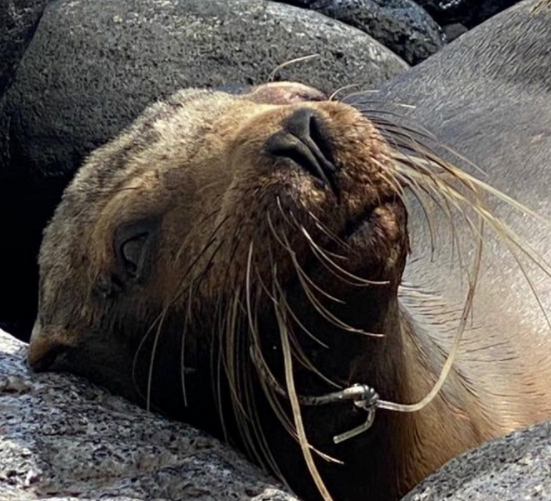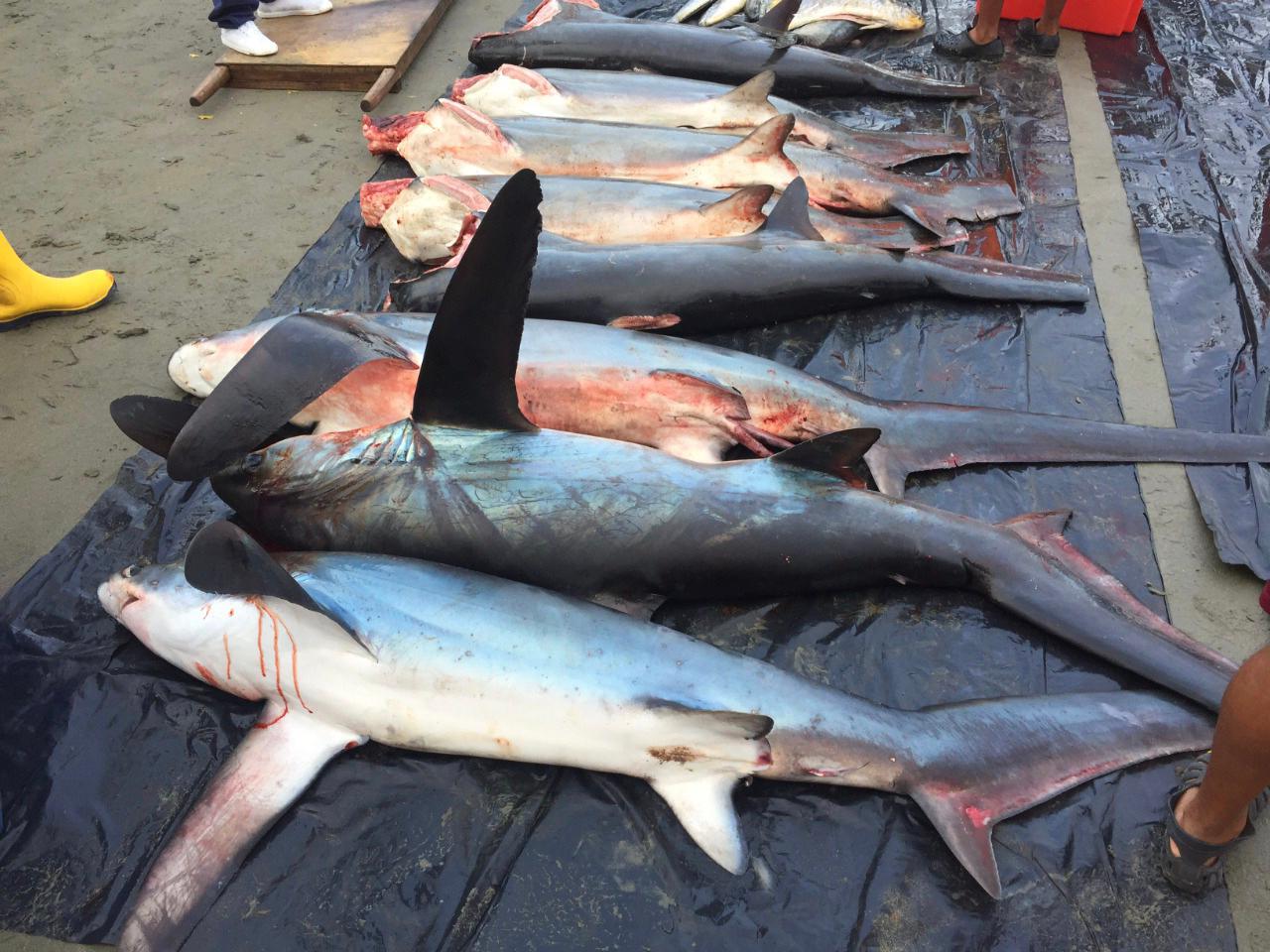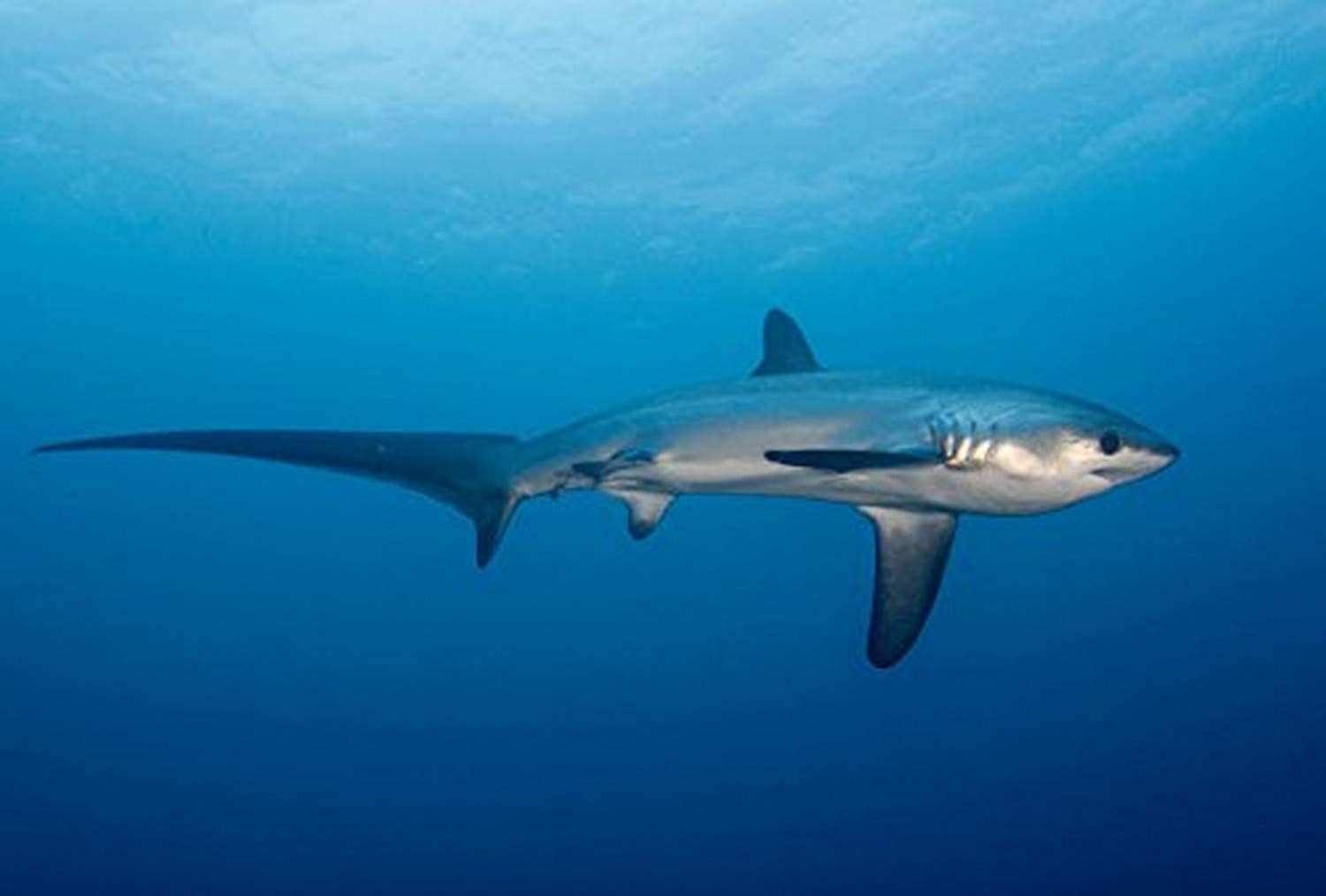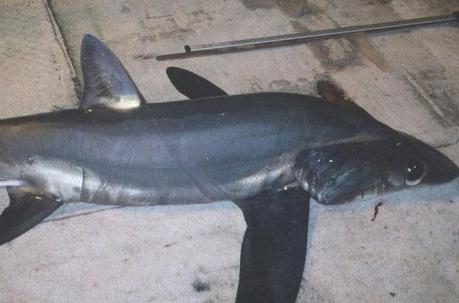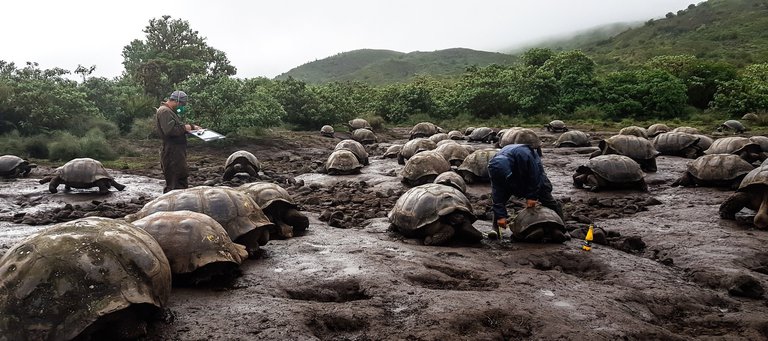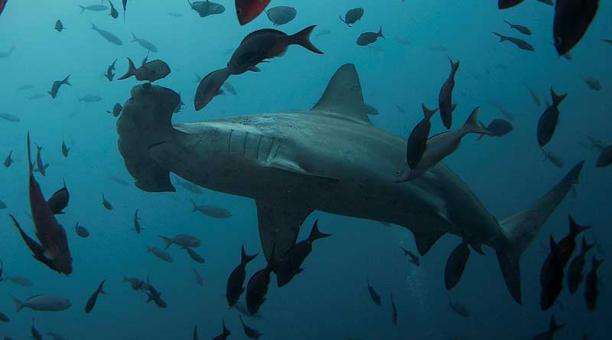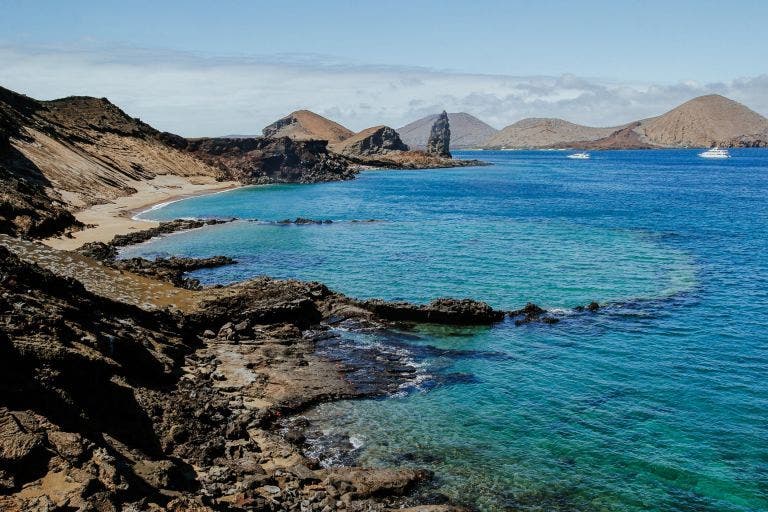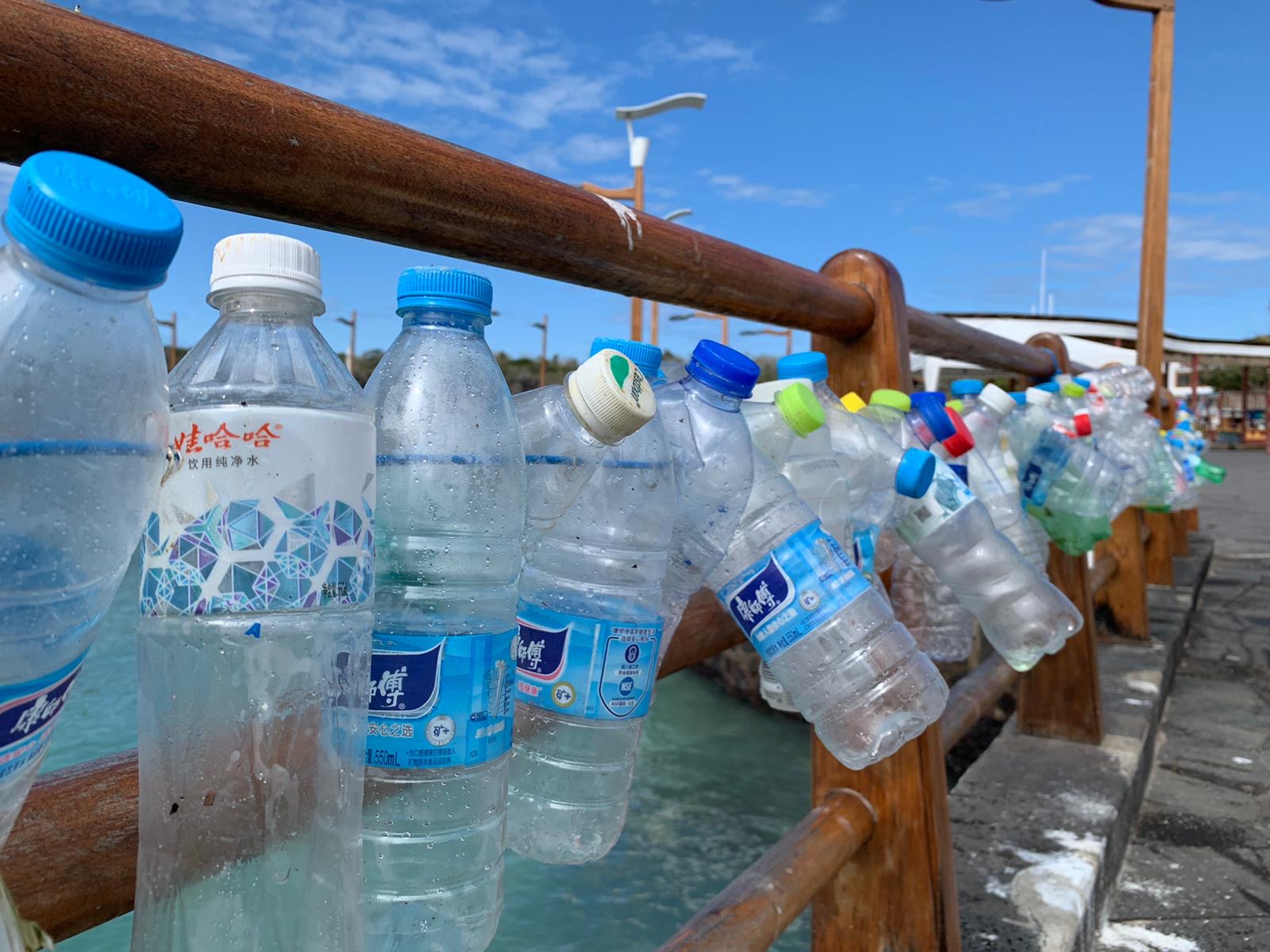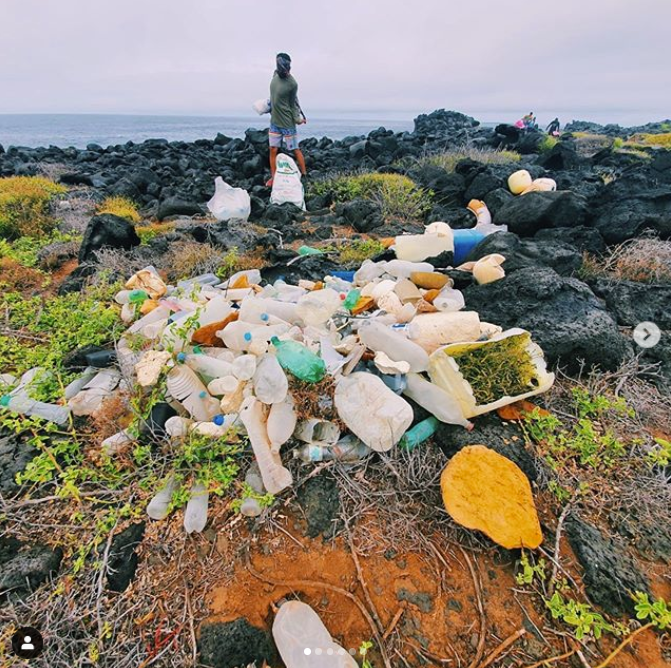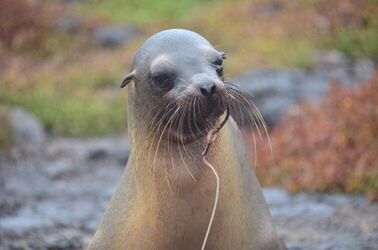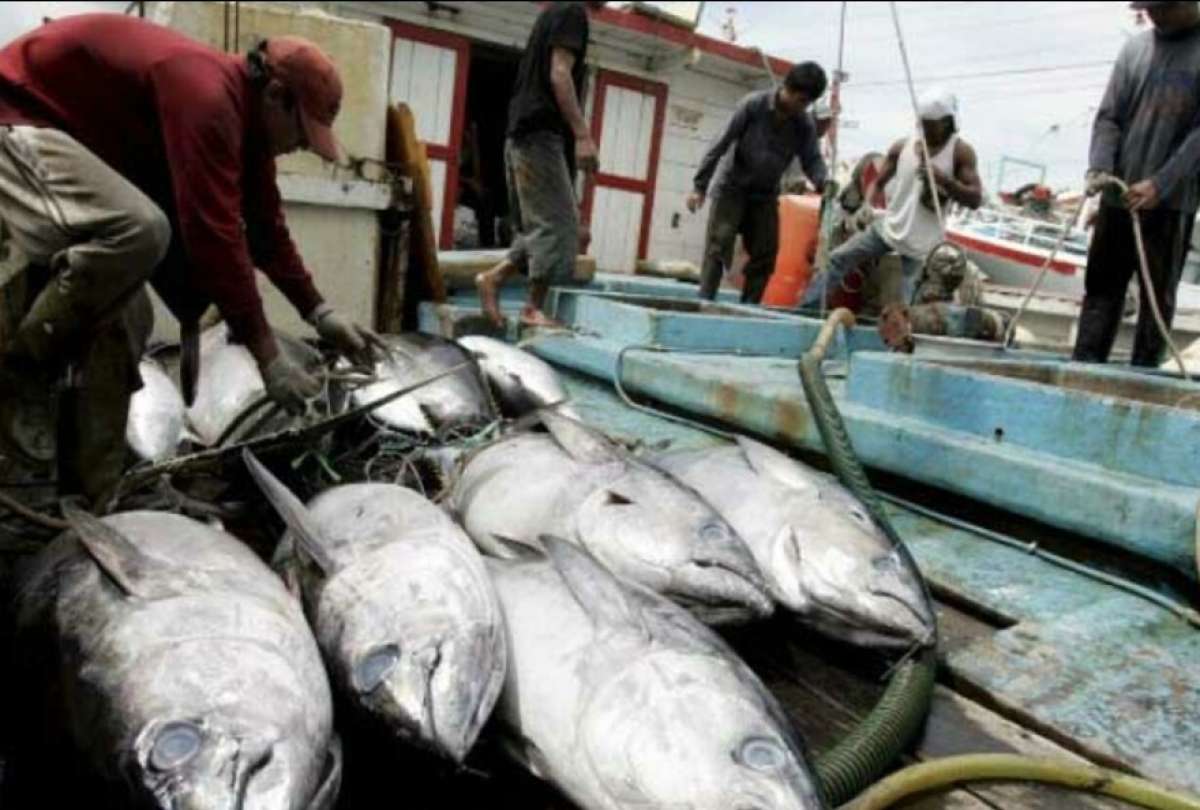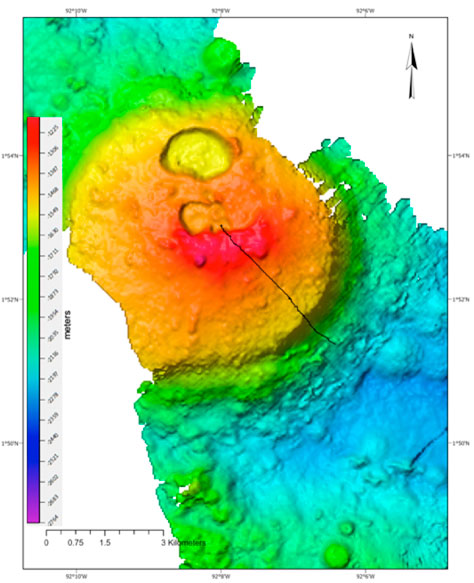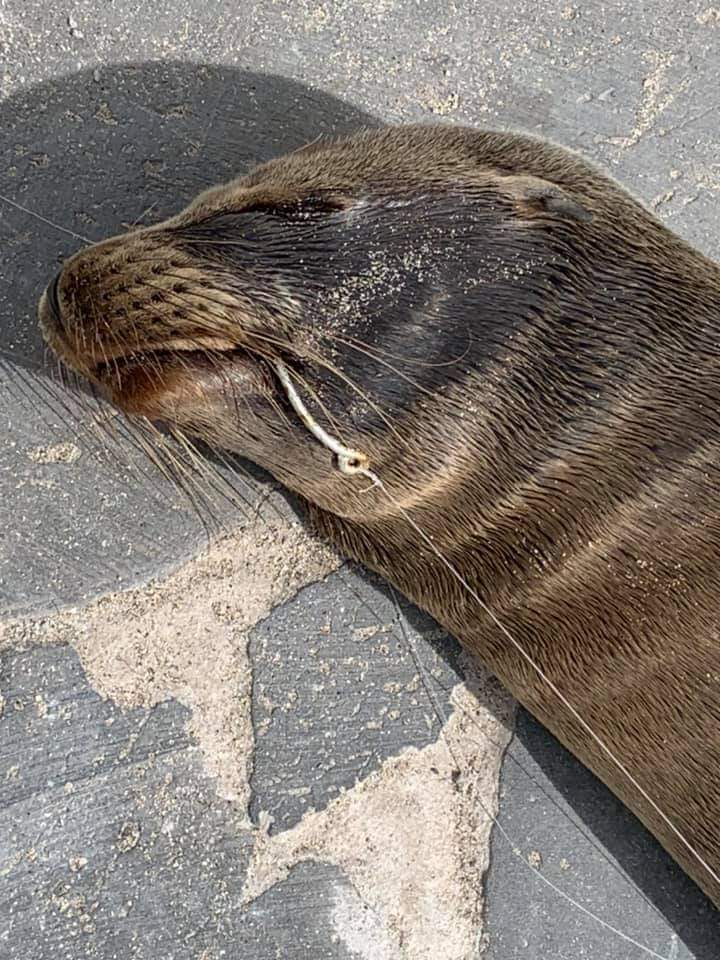
#SOSGalápagos
Learn more about local issues and challenges in the Galápagos Islands

End Longlining in the Galapagos Marine Reserve
Sign the petition to say NO to legalizing longlining in the Galapagos
We are Pacifico Libre and SOS Galapagos: today we raise our voice to defend the Galapagos animals and to stop the Longline fishery or "Modified Ocean Draw" which was prohibited in the Archipelago until 2005, since it is a method of fishing that harms lethally to the island's protected animals, such as sea lions or sea turtles.
This petition is addressed to the Galapagos National Park, the Government of Galapagos (CGREG), the Ministry of the Environment, the Ministry of Production, the President of the Permanent Commission Specialized in Biodiversity and Natural Resources in the National Assembly of Ecuador, and the candidates for president, Guillermo Lasso and Andrés Arauz.
The 'Longline Fishing Gear' or 'Modified Ocean Draw' is a fishing strategy that involves a main floating line with secondary and vertical lines that can be kilometers long, with hundreds of hooks. It is preferred by fishermen due to the speed at which they catch commercial species such as swordfish and tuna, making it more profitable. However, due to its size, the capture showed more than that.
According to a study on the Pilot Plan for the Experimental Longline Fishery in Galapagos in 2012-2013 (Tite, 2015), 366 of different species of sharks were caught (6.8%); 86 manta rays (1.6%) and the remaining bycatch including 7 sea lions, 23 green turtles, the percentage of bycatch was 16% more than the second study from July 2013 to November 2013. In December 2012 it was the highest bycatch rate with 34.19%.
The Galapagos Islands have served as a refuge for many of these endangered species around the world. However, the Galapagos National Park claims to be reviving the economy by allowing longline fishing to take place, but there is not enough control after the boats returning from deep sea fishing land on shore, there is not enough control by park rangers to collect data.
We are asking the responsible authorities, who are allowing the apparent use of prohibited fishing longlines, to make a public appearance justifying the decision, or to take over the study and permanently ban this type of fishery in Galapagos.
RAISE YOUR VOICE FOR GALAPAGOS AND SIGN THIS PETITION.
With much appreciation,
The Conservation Community of the Galapagos Islands and Ecuador

Help Save Thresher Sharks
Sign the petition and learn more about threats to this vulnerable species
Petition to Save Thresher Sharks
“In 2019, over 82,000 Pelagic Thresher Sharks, an endangered species, were landed on the coast of Ecuador.”
Two of the species on this list include the Pelagic Thresher (Alopias pelagicus), which is now classified as “Endangered”, along with the Bigeye Thresher (Alopias superciliosus), which is now classified as “Vulnerable.”
In order to provide these species with greater protection and to ensure compliance with the Convention on International Trade in Endangered Species of Wild Fauna and Flora, we are asking the Government of Ecuador to prohibit the catch and trade of all thresher shark species.
Threats to Thresher Sharks
Though often captured as bycatch, the Pelagic Thresher Shark is also considered a prized game fish and has numerous human applications. The meat is sold for human consumption, the skin is made into leather, and the fins are used for shark fin soup in Asia.
The squalene oil in the liver of the pelagic thresher can comprise 10% of its weight, and is used in the manufacture of cosmetics, health foods, and high-grade machine oil.
Little is known about their feeding ecology, but stomach content analysis reveals that pelagic threshers feed mainly on inhabitants of the mesopelagic zone, such as barracudinas (family Paralepididae), lightfishes (family Phosichthyidae) and escolars (family Gempylidae)
As in other thresher sharks, pelagic thresher sharks may swim in circles to drive schooling prey into a compact mass, before striking them sharply with the upper lobe of their tails to stun them.
Because of this behavior, pelagic threshers are often hooked on longlines by their tails. They are also frequently caught in driftnets meant for other species, such as tuna.
Shark Species Under Threat
As for the thresher shark, two species of this type can be found in the Galapagos, the pelagic thresher shark and the big eye thresher shark. Both are listed in CITES and are considered ‘Vulnerable’ as of July 2020.
Their abundance in the area is not yet known and both species were found inside the Fu Yuan Yu Leng 999 in 2017.
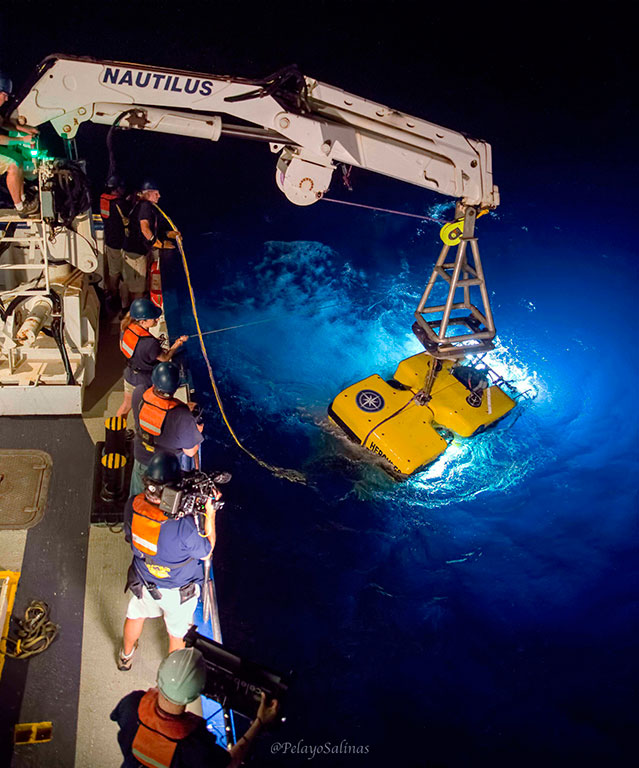
Research Updates
Learn more about issues that matter most to you
4,723 Giant Tortoises Tagged on Isabela
In the mentioned period, 160 square kilometers were tracked and a total of 1,745 females, 1,794 males and 1,184 juveniles of the species were marked, figures that “exceeded the expectations” of the technicians who make up the Initiative for the Restoration of Giant Tortoises.
Threats to hammerhead sharks are on the rise
The population that lives in the Pacific Ocean is one of those affected. A recent study, led by scientist Demian Chapman and published in the journal Animal Conservation, revealed that 60% of hammerhead shark fins found in Hong Kong markets belonged to specimens caught off the coast of America, from Baja California to Peru.
[Ecuador] does not allow the intentional fishing of hammerhead sharks and in 2020 the commercialization and export of fins was prohibited. Despite this measure, in September of that year, eight tons of shark meat were seized from Ecuador in Peru.
Scientists discover the secret of Galápagos’ rich ecosystem
In this new research, published in Nature Scientific Reports, scientists from the University of Southampton, National Oceanography Centre and Universidad San Francisco de Quito in Ecuador used a realistic, high-resolution computer model to study the regional ocean circulation around the Galápagos Islands.
This model showed that the intensity of upwelling around the Galápagos is driven by local northward winds, which generate vigorous turbulence at upper-ocean fronts to the west of the islands. These fronts are areas of sharp lateral contrasts in ocean temperature, similar in character to atmospheric fronts in weather maps, but much smaller.
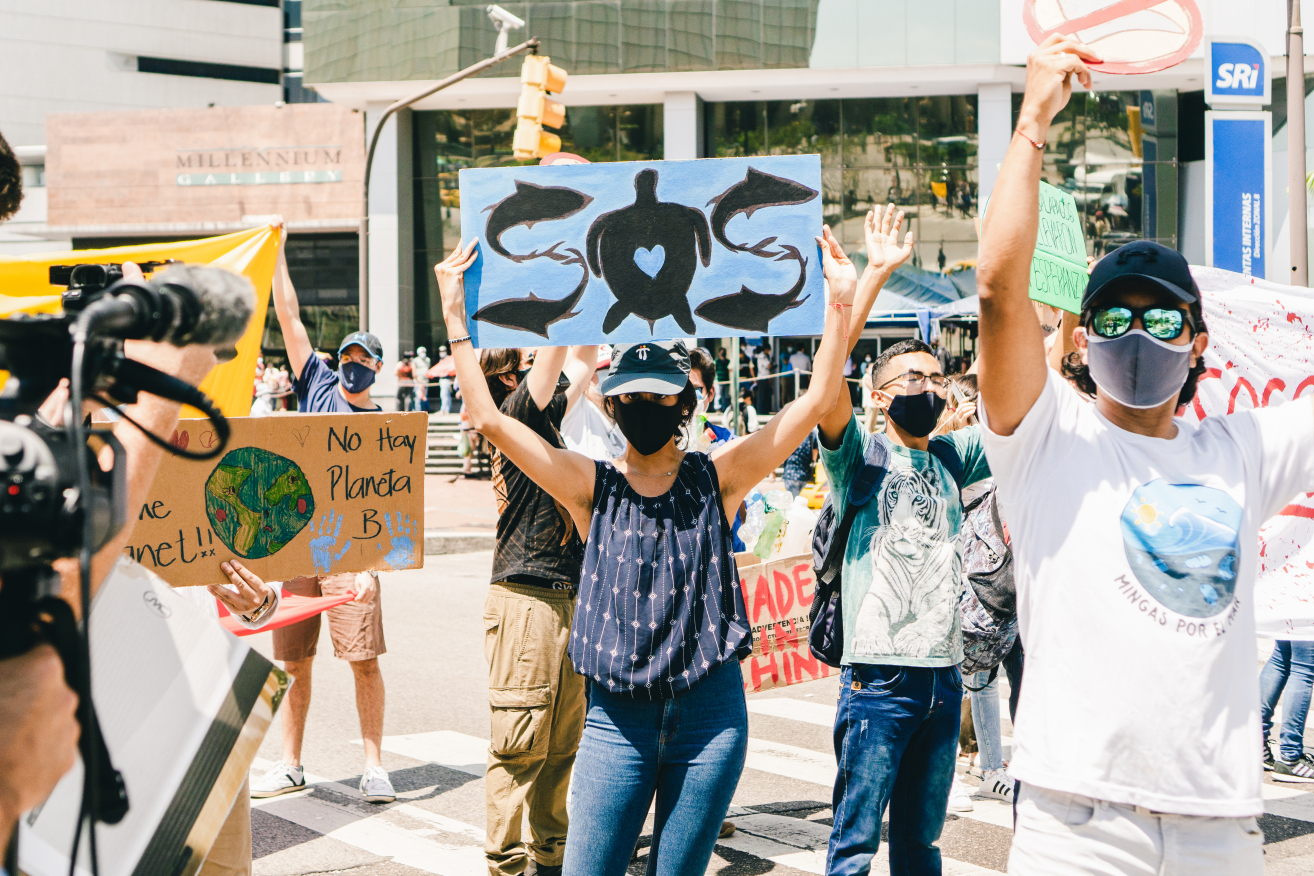
Take Action
Learn more about the issues that matter most to you
Galapagos Science Center's Scientists Need Your Help
The project “Understanding the effects of marine debris in Galapagos” has confirmed 30 species of vertebrates with records of entanglement, ingestion and habitat affected by plastic pollution in Galapagos.
Work together with fishermen, naturalist guides, park rangers, scientists, sailors, students, tourists and citizens.
You can also help our scientists understand the problem in order to find specific solutions, just by filling out the survey! You can access the survey by clicking on the link: https://arcg.is/0bTLKv
Support the UN Development Programme’s #ActivateGalapagos Campaign
“The only way to support the conservation is to support people who are the first line of defense of natural heritage.
It is a call for collective action that generates will and support for all those in Ecuador and in the world who love and support the Galapagos,” said President of the Galapagos Governing Council, Norman Wray.
But the islanders cannot do this alone and need support to get through this pandemic and to transform their businesses into sustainable endeavours.
Learn more at SaveGalapagosIslands.com
Sign the petition to Stop Longline Fishing in the Galápagos
•The petition is designed to obtain formal answers from Ecuadorian authorities about the longline fishery being employed in Galapagos.
•Spread the news, share the petition and help us inform the world about the impact the technique is having in the Galapagos.
•Help us to pressure authorities to BAN the fishing strategy and help promote studies of fishery techniques that have null incidence of protected species bycatch and techniques that are environmentally friendly.
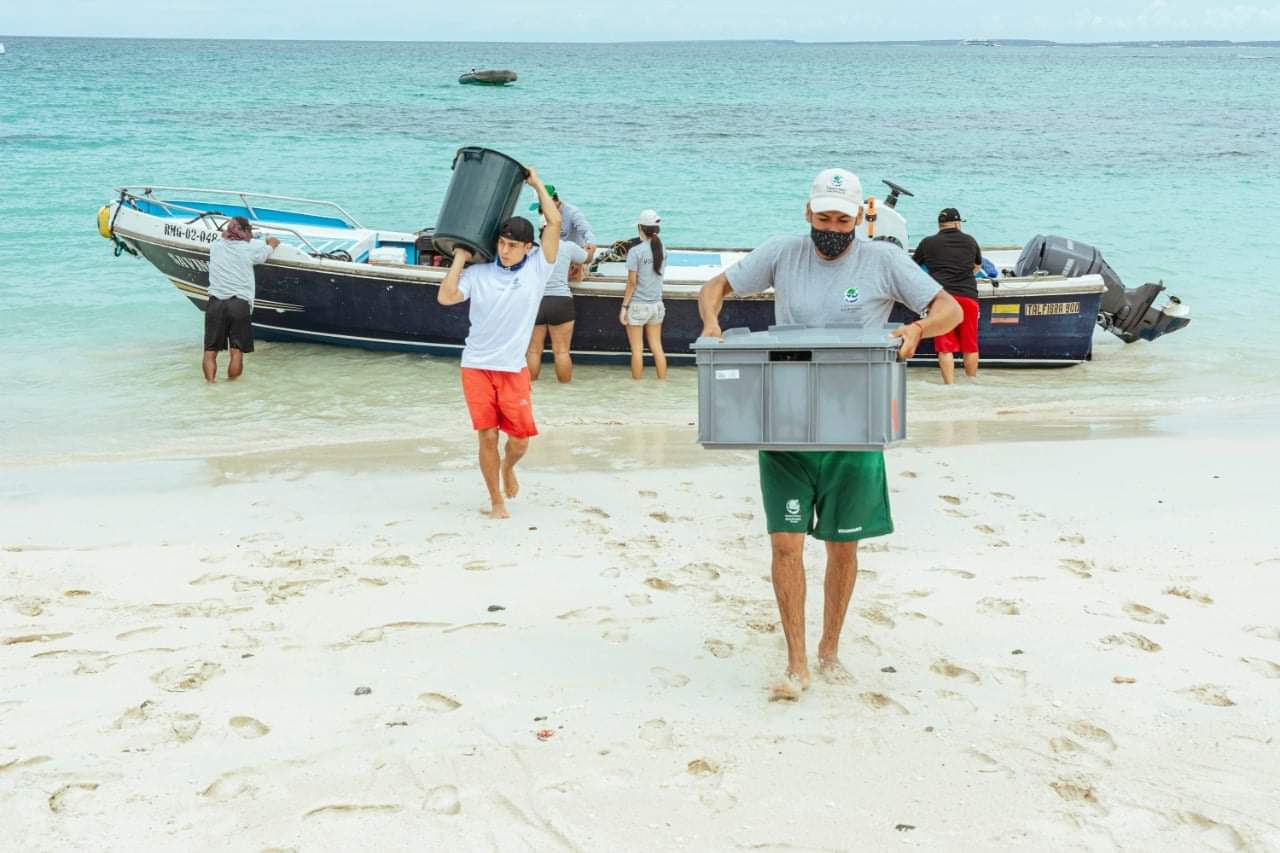
Dive Deeper
Learn more about the issues that matter to you
The longline threat returns to Galapagos
Archive (2018): And the order has been fulfilled: since that date, two studies have analyzed whether it is possible to use the longline again: in 2012 and 2017. One of them was the Pilot Plan for Deep Sea Fishing.
Conducted by the Galapagos National Park between November 2012 and December 2013, it concluded that the modified oceanic tie “registered a global rate of bycatch of 11.25% of the total catch.”
603 animals, including 366 sharks (of different species) and 86 manta rays, all vulnerable species, at risk or threatened globally and part of the red list of the International Union for Conservation of Nature”
That result was 1.25 points above the limit that bycatch should have. The 10% cap on bycatch was agreed by the Ministry of the Environment, the Galapagos fishing sector and the National Park.
Assessing fishing effects inside and outside an MPA: The impact of the Galapagos Marine Reserve on the Industrial pelagic tuna fisheries during the first decade
Archive (2018): The creation of MPAs is often politically and socially controversial, especially when stakeholders are required to make a short-term sacrifice, with the promise of potential long-term gains.
In many cases, marine reserves may also result in particular stakeholder groups losing access to resources, which in turn can lead to issues of compliance and enforcement.
This is even more challenging when it comes to oceanic MPAs. As pelagic species tend to be highly mobile, oceanic MPAs – designed to protect the species or enhance fisheries – must be either very large, or target specific key life stages of species that display site fidelity.
Tourist Preferences for Seamount Conservation in the Galápagos Marine Reserve
• Respondents were willing to pay on average US$48.93 in increased entrance fees to the Galapagos Marine Reserve.
• Tourists placed equal emphasis on management plans which aimed to benefit local people’s livelihoods, science and tourism.
Seamounts provide oases of hard substrate in the deep sea that are frequently associated with locally enhanced biological productivity and diversity. There is now increasing recognition of their ecological and socio-economic importance.
However, management strategies for these habitats are constrained not only by limited ecological understanding but by the general public’s understanding of the pressures facing these ecosystems.
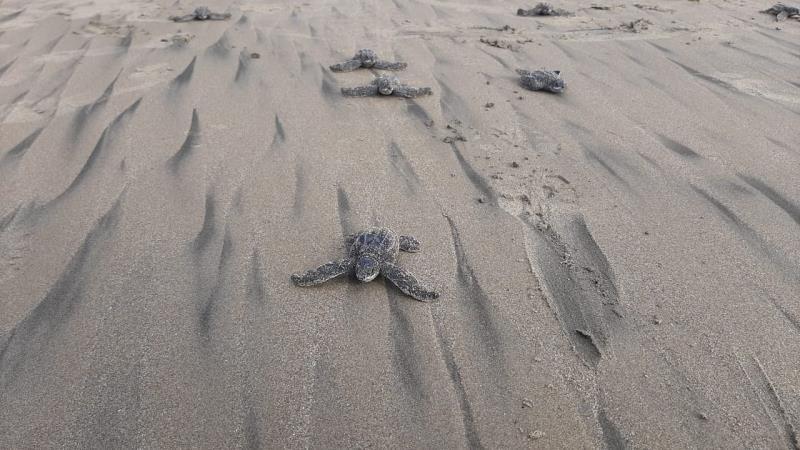
#SOSGalapagos 🎥
Ever wondered how #SOSGalapagos began? Learn more about how our movement and network began in 2017
#SOSGalápagos (English)
#SOSGalápagos (Español)

